There are many differences between Razer’s BlackShark V2 and the new V3 line of gaming headsets—from sparkling new drivers to super-speedy low-latency connections—but the thing that really jumps out to me is the fact that it’s wireless from top to bottom.
Once, it was just the Pro version that got the wireless treatment at launch, with the non-Pro BlackShark V2 just a standard wired set of cans. This time around, Razer has given us three new Blackshark headsets, from $99 up to $250, and they’re all cable-free. That’s great news for us PC gamers, though maybe less so for the pricey Razer BlackShark V3 Pro, which I’ve had a slightly troubled time reviewing given its price and my feelings about its ANC feature.
So, maybe it’s inevitable that the Razer BlackShark V3, the middle child of the new range, is my favourite. And, honestly, I think it might even knock the ageing HyperX Cloud Alpha Wireless off its longtime perch atop our list of the best wireless gaming headsets. I’ve spent a long while testing this new headset side-by-side with the HyperX set, the old BlackShark V2 Pro, and the new V3 Pro, and this is going to be the one which remains plugged into my office rig.
The main reason for that is that the BlackShark V3 just sounds great. The new drivers are slightly different from the top-end TriForce Gen-2 drivers built for the V3 Pro headset in that they use a titanium coating rather than a bio-cellulose diaphragm, but I have really, really struggled to tell the difference between the audio representation of the V3 Pro and the straight BlackShark V3.
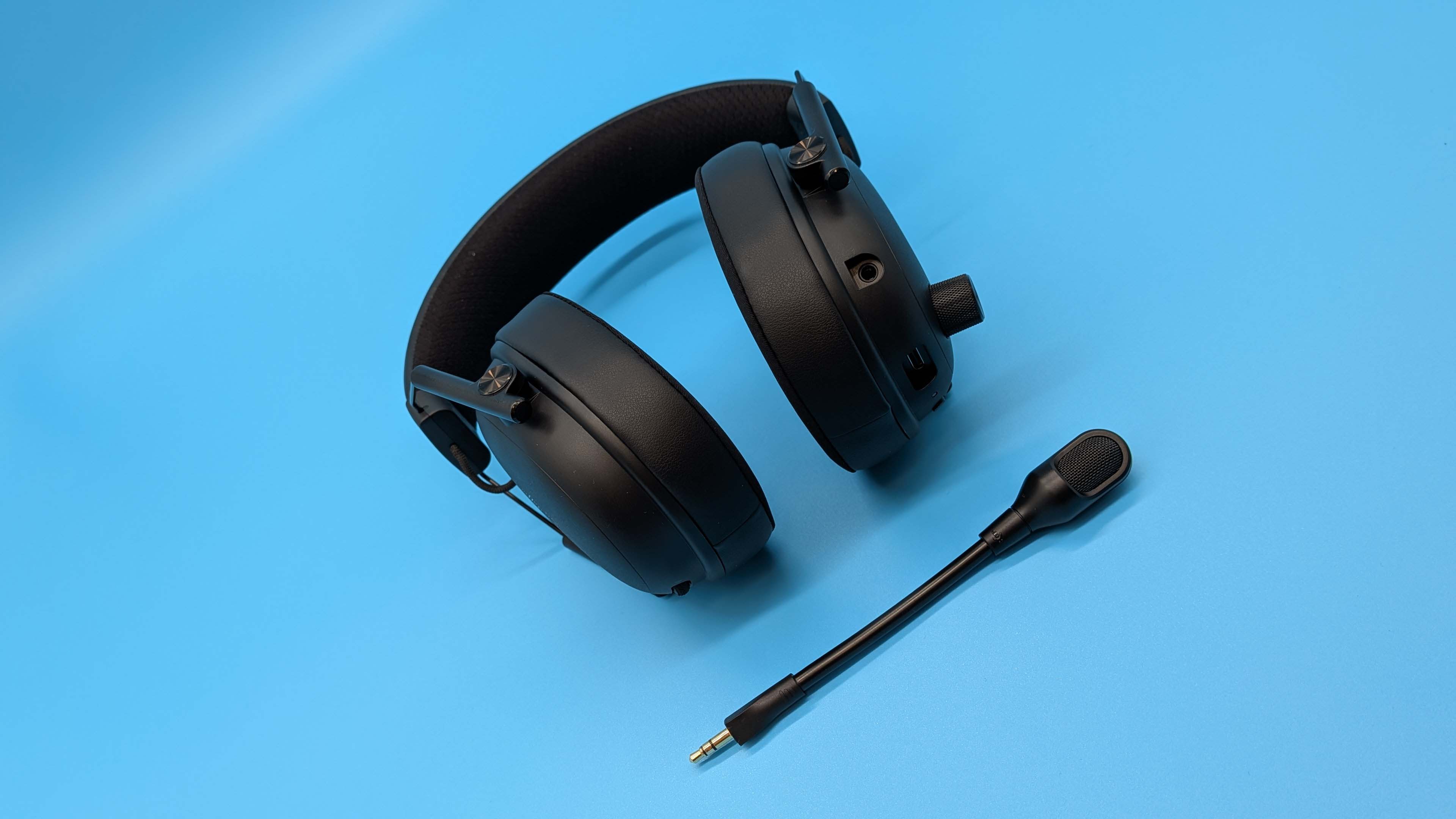
Operating principle: Closed-back
Connectivity: Wireless (Bluetooth 5.3 or HyperSpeed Gen-2), Wired (USB Type-A)
Drivers: 50 mm TriForce Titanium
Frequency response: 12 – 28,000 Hz
Mic: 9.9 mm detachable
Pickup: Super Wideband
Battery life: 70 hours
Weight: 270 g | 0.59 lbs
Price: $150 | £150
From what I can glean, it is just the diaphragm that’s changed between the two 50 mm TriForce drivers, which means you’re getting the best of the rest of the redesigned cans’ features. Of those, the key features are the “driver plug”, which reportedly reduces harmonic distortion by up to 50%, and the 75% bigger magnet in the base of the driver, which is there to improve the bass response and help increase the clarity of the sound.
And the difference this makes is pretty huge. There’s a level of clarity and detail to the BlackShark V3 now, which makes it one of the best-sounding gaming headsets you can clamp onto your bonce. I’m still going to be leaning on my Audeze Maxwells when I’m gaming at home, just for their planar magnetic perfection, but honestly, the sound from these $150 cans is really not a million miles away from that $300 set.
As I said, I’ve been comparing this new headset to the Cloud Alpha Wireless—because it’s our current pick as the best wireless headset. The HyperX set’s dual-chamber drivers still sound good, with a warm, detailed sound. They were, after all, the specific target when Razer was designing its own ported, multi-chamber driver design for the original BlackShark V2.
And the clarity of the Cloud Alpha Wireless feels almost on-par with the new BlackShark V3… until a lot starts happening. This is where you can really tell the difference in quality between the competing drivers. When it all kicks off in the heat of battle in your chosen gameworld, or you hit the drop where a song mix brings in a lot of different instruments, that’s where the TriForce drivers shine.
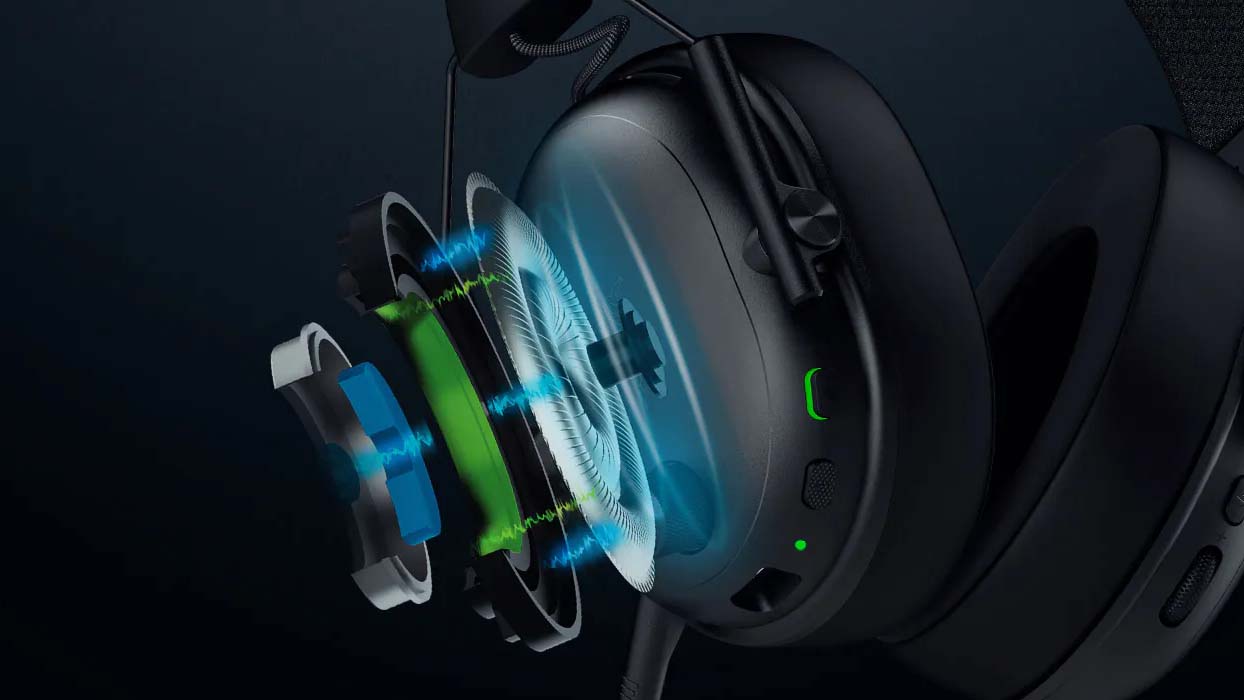
One of the best-sounding gaming headsets you can clamp onto your bonce.
It’s not that the HyperX cans’ audio gets muddy so much, but it becomes hard to pinpoint individual sounds. That’s not the case with the BlackShark V3, where the detail of each individual element is retained. The cut-off on these drivers is excellent, which means the extra bass feels tight and high tones or vocals keep their own clarity within the mix. When there’s a lot going on, that means you can really pinpoint those details—and when that becomes about knowing where footsteps or gunshots are coming from, that’s a real aural advantage.
Basically, it’s the audio quality that’s really struck me about the new Razer headset, but that’s not all it has going for it. Sure, you’re not getting the active noise cancelling of the far more expensive BlackShark V3 Pro, but I’m not hugely sold on its effectiveness anyways. And the ear cups on the straight V3 headset are a mix of leatherette and memory foam, which gives a fit and seal that actually delivers an impressive level of passive noise isolation on their own.
And without that ANC increasing the pressure on your ears, combined with the fact that the BlackShark V3 is near 100 g lighter than the V3 Pro—and around 50 g lighter than the Cloud Alpha Wireless—you’re getting a gaming headset which feels comfortable even for the long haul.
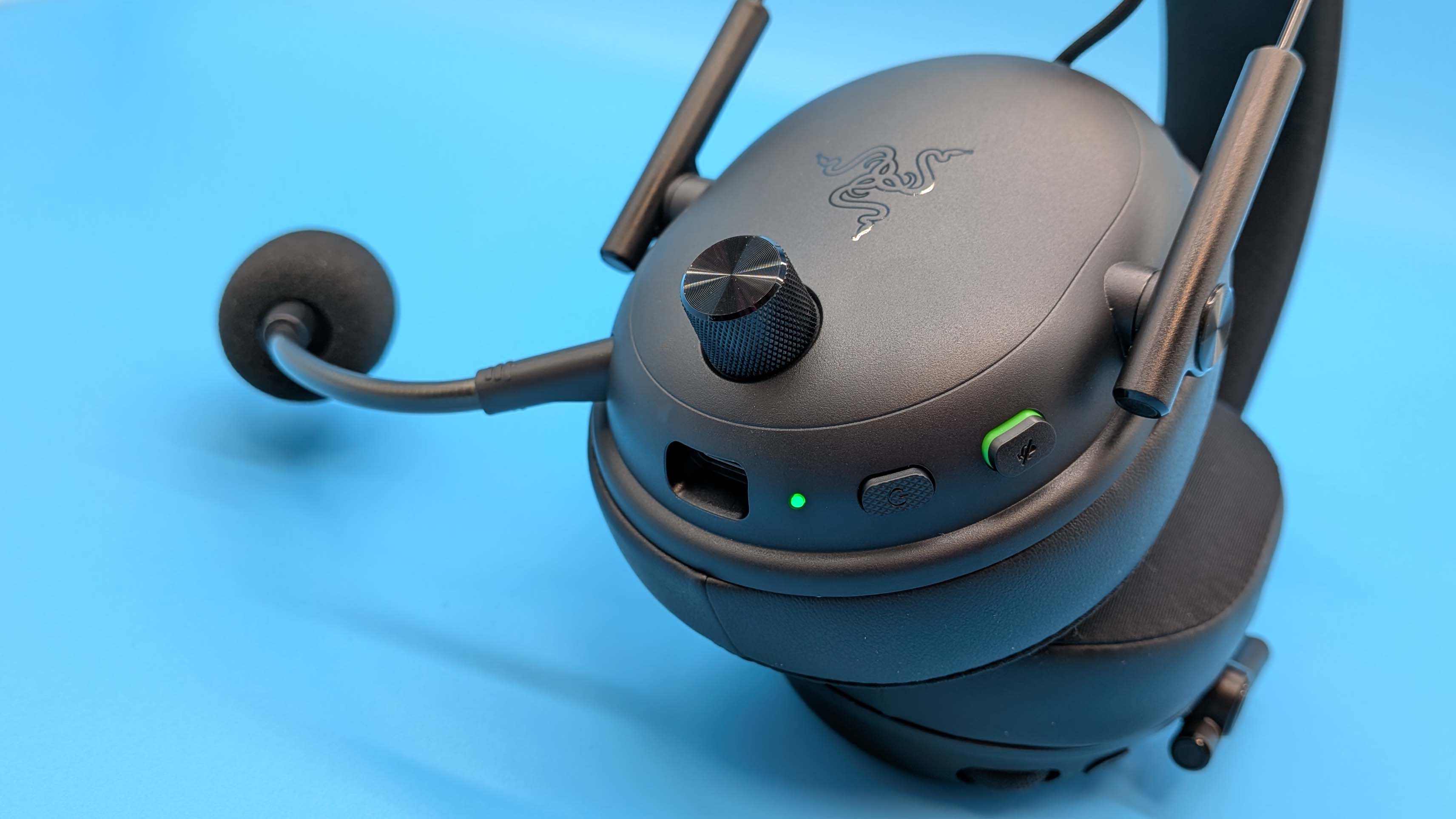
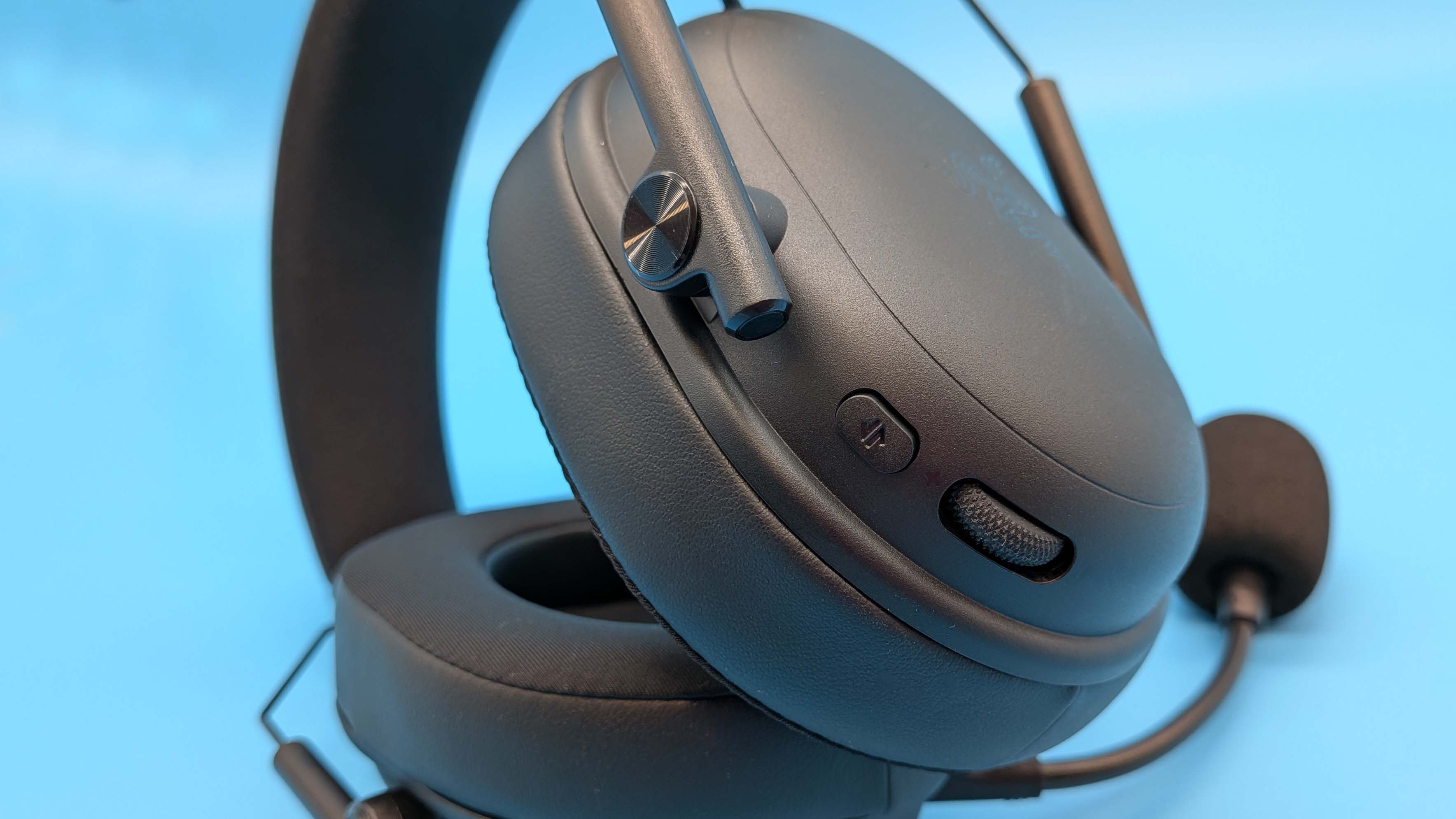
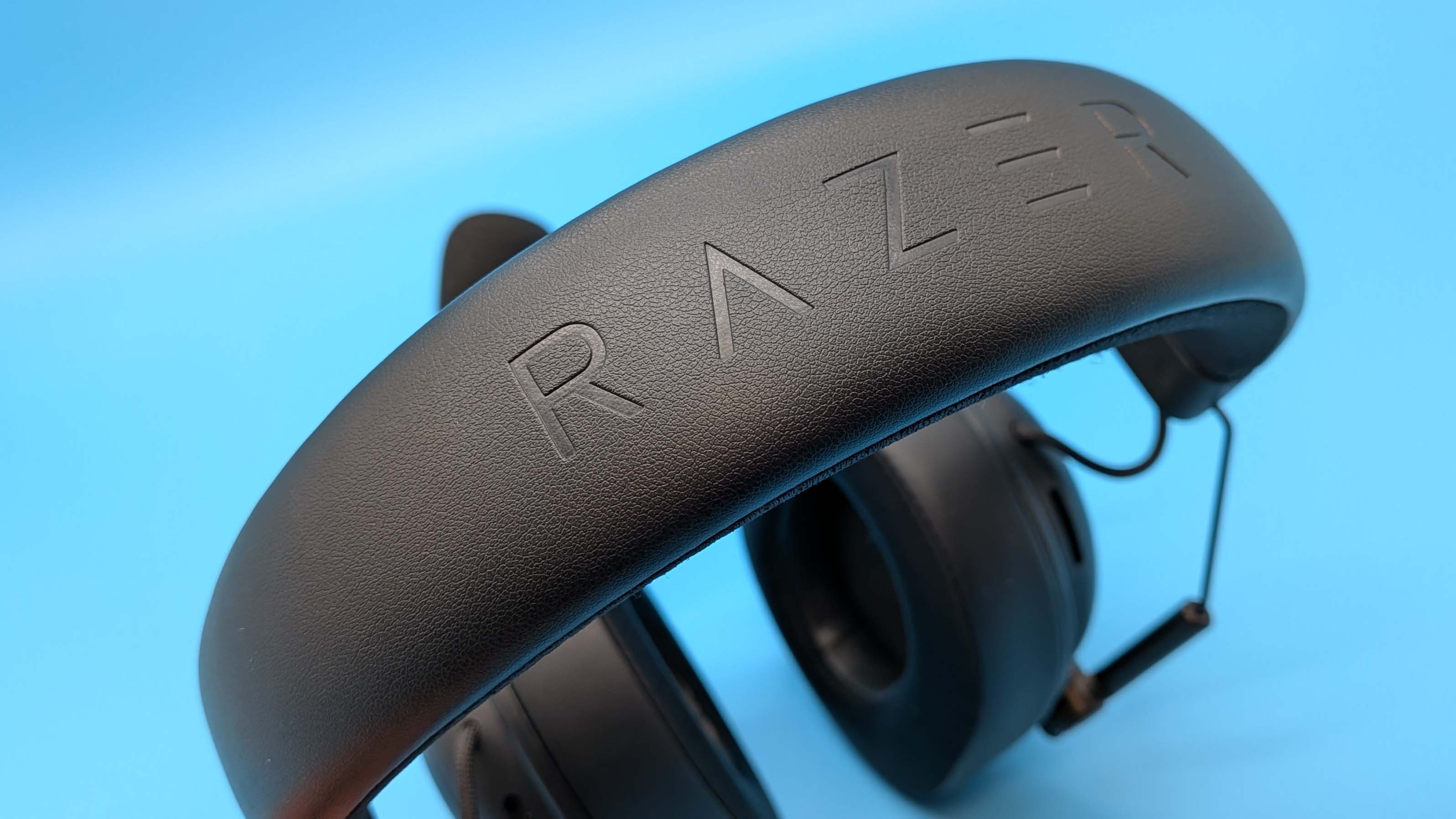
I’m a big fan of the BlackShark chassis in general, too. The overall design hasn’t really changed between versions two and three, but that’s not an issue at all. I love the big, physical volume knob on the left ear cup, and the mute and power buttons have always felt placed right. It’s a clean design, too, with just a connection toggle button and a configurable secondary dial on the right ear cup.
Okay, you’re not getting the ‘Pro’ stitching of the more expensive BlackShark, but it’s solid, robust, light, and feels like it will take an absolute pounding day in, day out.
The only other place you miss out against the $100 pricier Razer headset is in the mic. Where the V3 Pro uses a new 12 mm microphone, this middle-order headset uses the same 9.9 mm mic as the BlackShark V2 Pro 2023 update. If I’m honest, for me that’s not a big issue. It’s detachable, and at home I’m still going to be using an affordable desk mic for improved clarity anyway, but in the office I can happily use it for meetings and voice chats without issue.
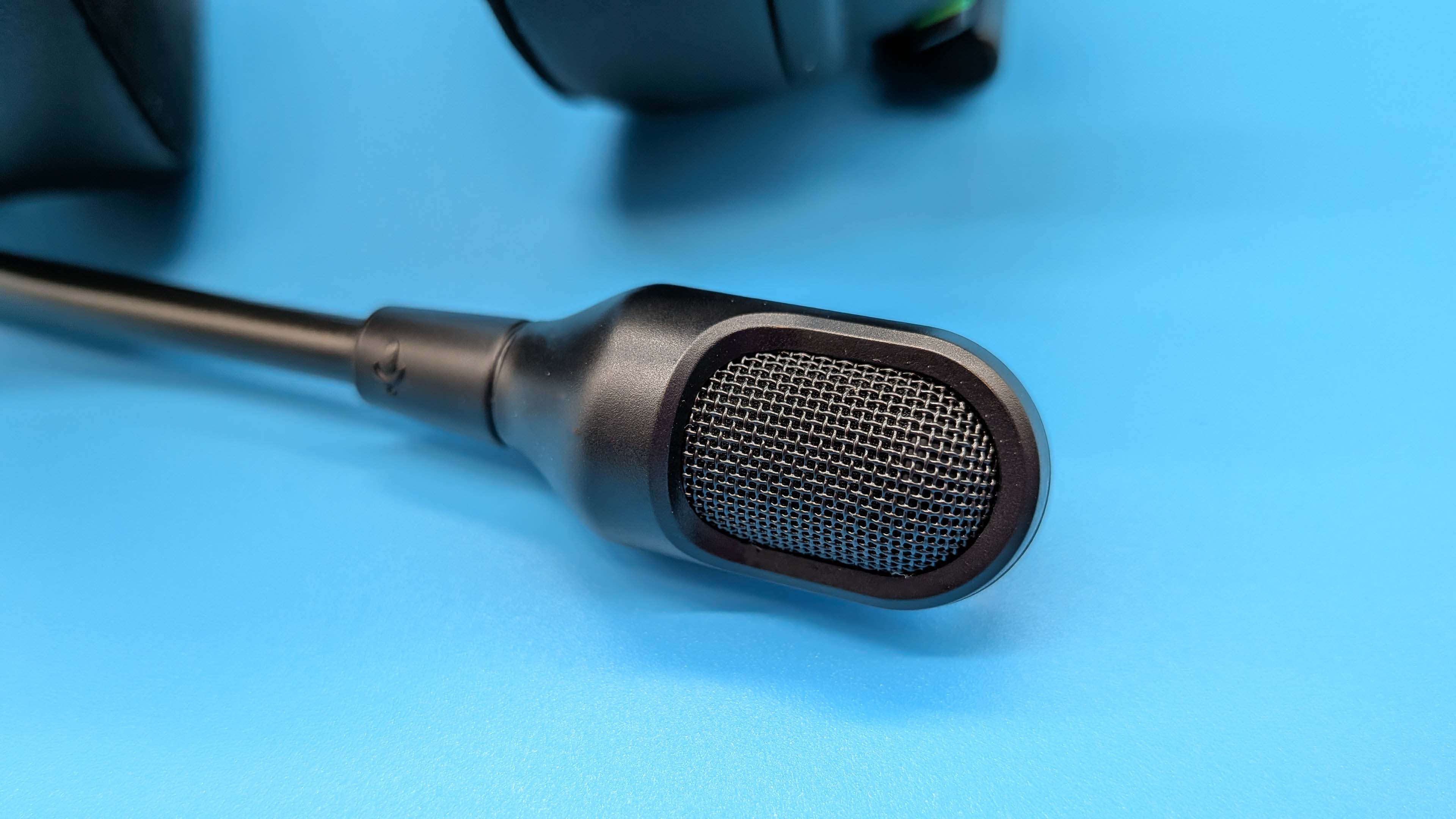
Default EQ:
Broadcast EQ:
Oh, and it only comes in black right now, while you can get the V3 Pro in my preferred white. But then, it is the BlackShark, right?
Where it does lose out against the HyperX set is in that battery life. The 300 hours of uptime on the Cloud Alpha Wireless is well beyond the 70 hours the BlackShark V3 can offer, and instinctually, that feels like a big miss between two wireless headsets. However, Razer estimates that just 15 minutes of charging time will get you six hours of gaming.
It is worth saying that one of the other headline features of the new BlackShark does have a severe impact on its battery life, too. The HyperSpeed Wireless interface has a low-latency mode, which is enabled by default, and drops the connection speed to an unprecedented 10 ms. The standard HyperSpeed connection is around 25 ms by contrast.
That’s great when it comes to competitive gaming for sure, but like the 8K polling rate of a modern gaming mouse, it will more than halve your battery life. Razer tells me that you’re looking at a little over 30 hours of battery life with it enabled at 50% volume.

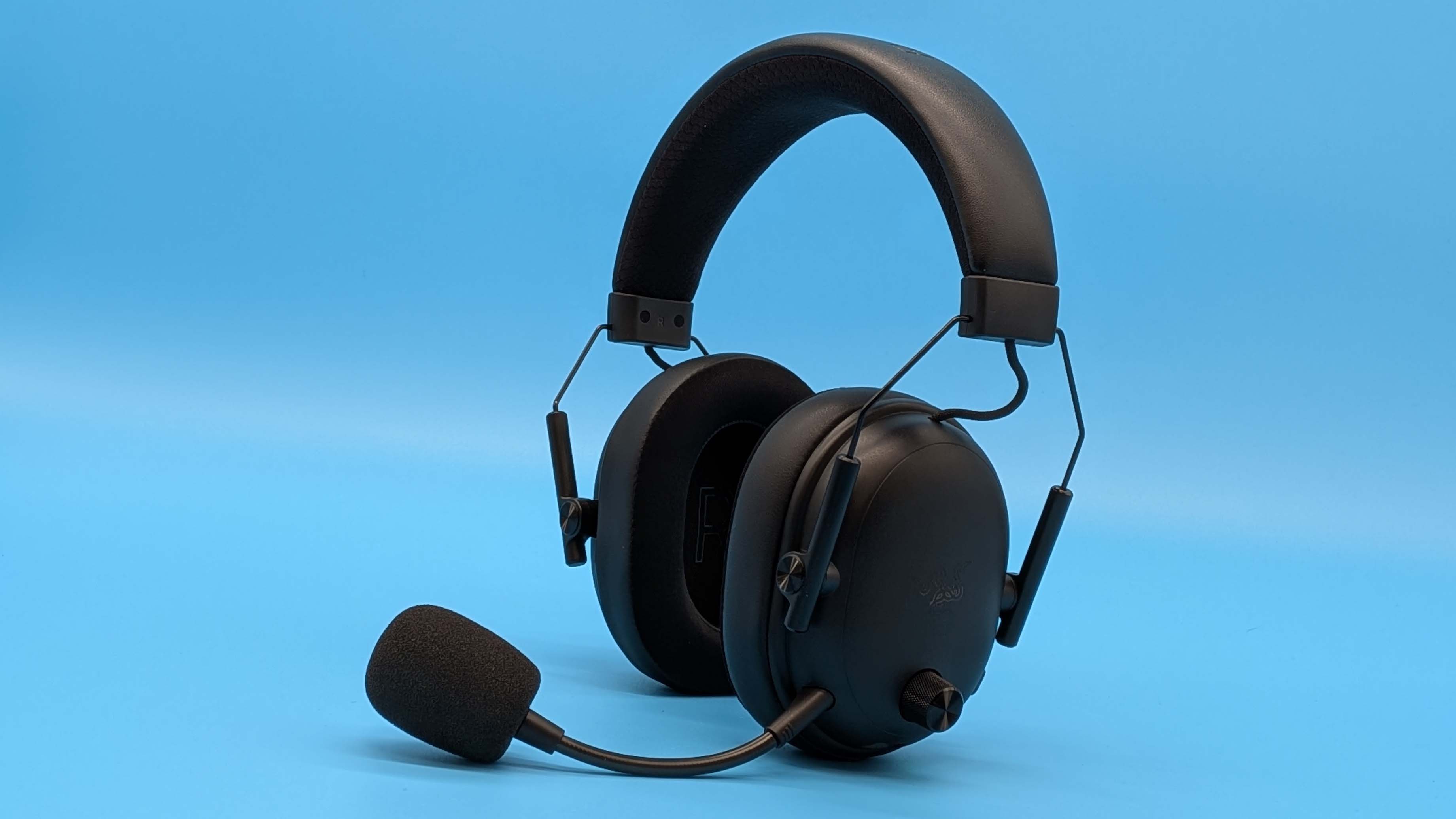
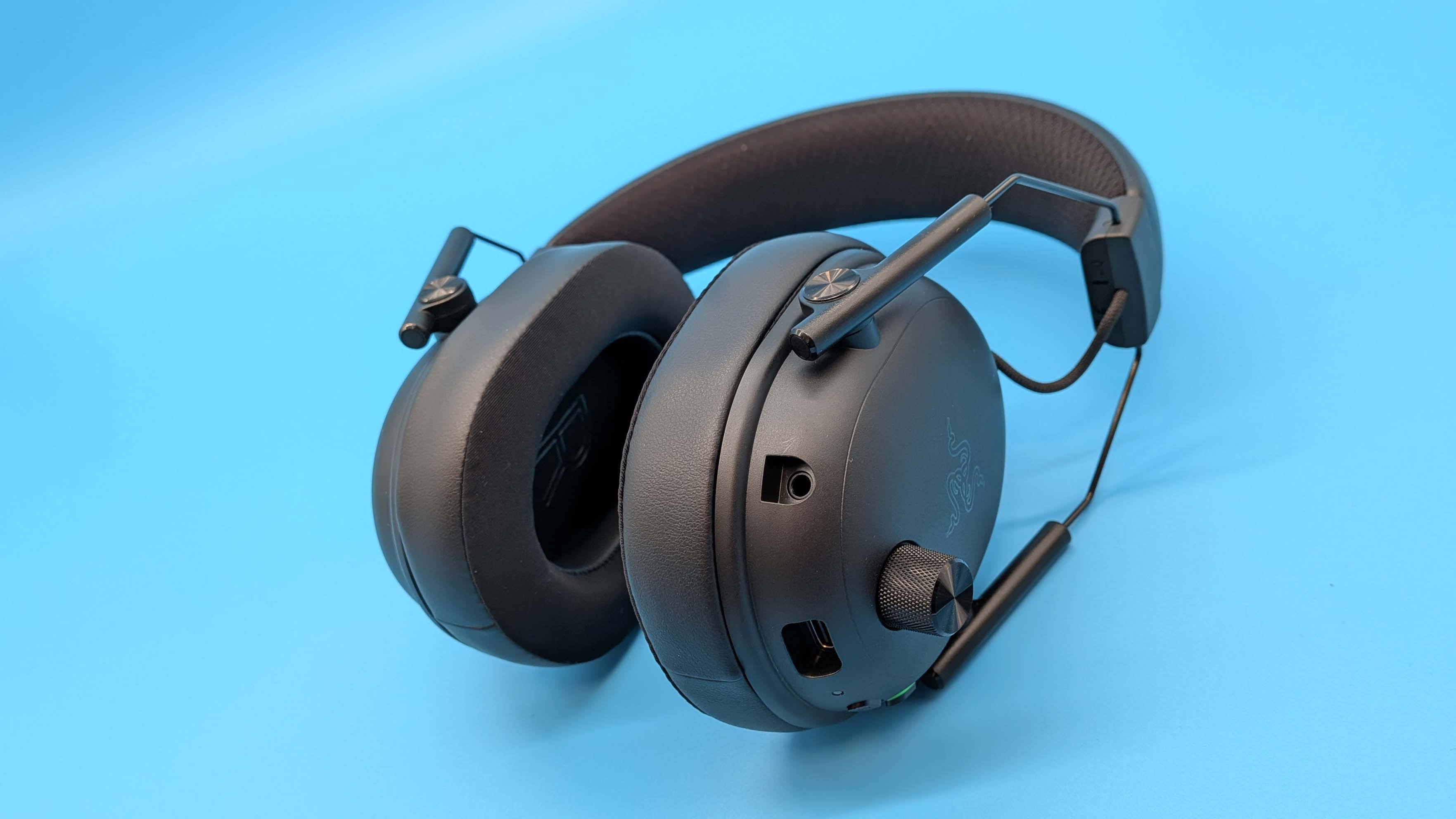
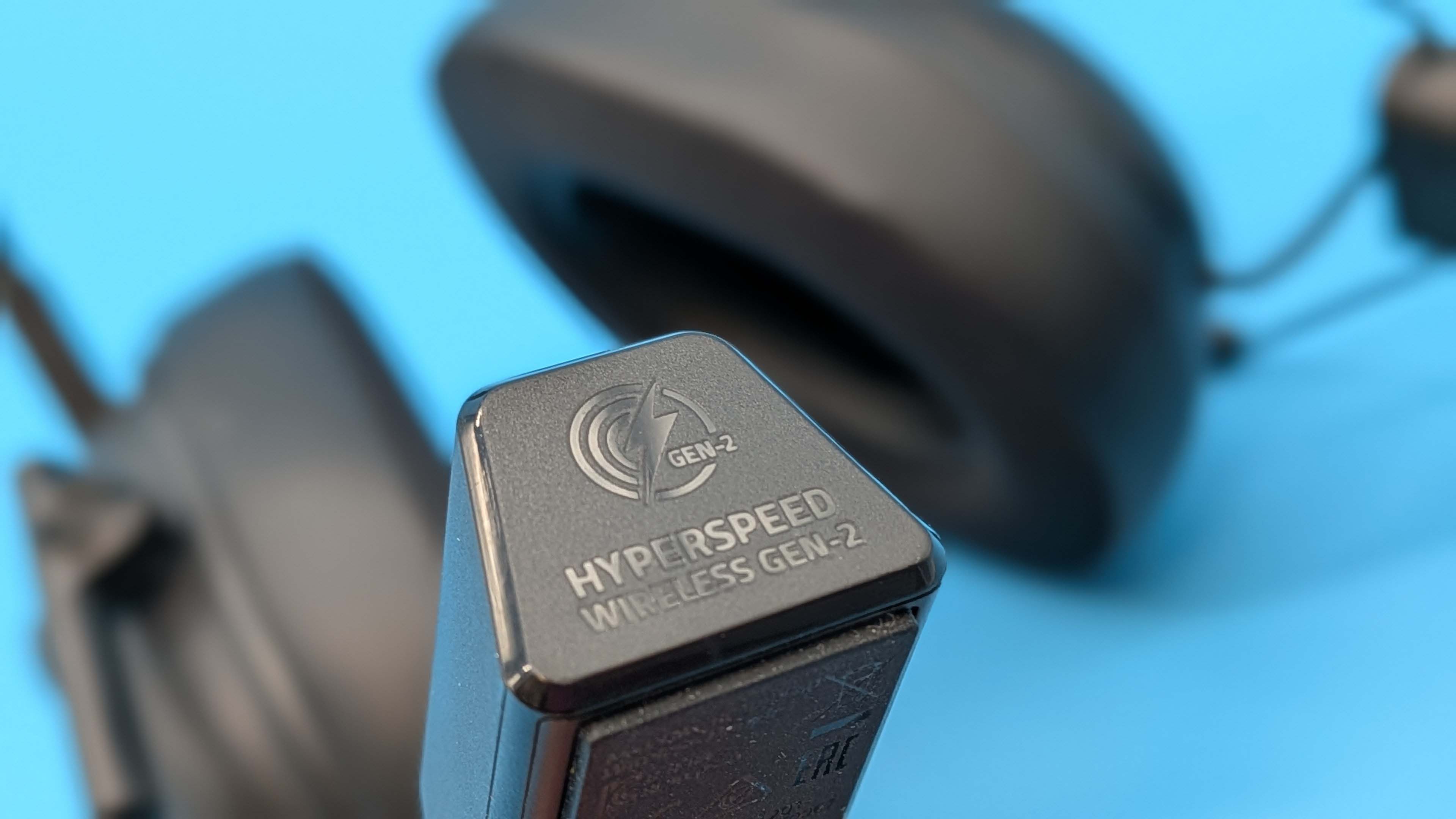
I have to say, I’d welcome an automatic setting in the Synapse software like the dynamic polling rate switch for the DeathAdder V4 Pro, which can tell when a full-screen game is running and can flip from 1,000 Hz to the battery-draining 8,000 Hz polling rate on the fly.
When I’m just on a call or listening to music while I’m working, I don’t need to have a 10 ms latency that’s going to kill my battery life, but to have that come into play when I might actually need it would be a great feature.
While Synapse is still a pain in the butt when it demands a complete system restart for just plugging in a new device, there are still a bunch of actually useful features in there. You get the different EQ settings, which can really make a difference to your audio, and that includes game-specific EQs, which you can add to your quick access list. There are also enhancements, such as the ultra-low 10 ms latency toggle, options for your simultaneous 2.4 GHz/Bluetooth sound mix, and other actual audio enhancements.
✅ You want excellent audio clarity without breaking the bank: Sure, you can spend big on a planar magnetic set of cans, but they will be at least twice the price, but not twice as good.
✅ You want a comfortable, lightweight headset: At just 270 g, the BlackShark V3 is an impressively light set, and while it doesn’t clamp your head in a vice-like grip, it doesn’t shift about when your head does.
✅ You want the fastest, lowest latency wireless connection: Let’s face it, most of us will never need to shave 15 ms off a 25 ms connection, but if you’re serious about competition, then you just might.
❌ You’re ready to spend big on the best sound: I still think the Audeze Maxwell delivers the best audio of any gaming headset on the market, but you will have to pay a significant premium for the privilege.
There are also specific EQ settings to tune the sound of the microphone, and a handy little option to pick what you want the LED on the wireless dongle to denote. I like it to have the battery indicator on there, personally.
It is worth noting that, because it’s using that HyperSpeed dongle, gone is the discreet wireless USB connector. Instead, you need to connect via a cable looping around onto your desktop. It’s a little frustrating if you’re on a laptop, but as you get audio via the USB cable when filling up the battery that’s going to double as your charging cable anyways, so it’s less of an inconvenience on a desktop setup.
And it’s going to take something more than just an inconvenience to trump the audio quality on offer with the BlackShark V3. When the different headsets arrived in the office, it was always going to be about the top-end V3 Pro, for me. But the process of testing these different cans has shown just what a great wireless gaming headset this middle child is.
At $150, it’s around the same price as the BlackShark V2 Pro and the Cloud Alpha Wireless, and I think it’s a far better gaming headset than either of those. While I know that is still a good chunk of cash to drop on a PC peripheral, the comfort and audio quality that you’re getting out of Razer’s new drivers is going to have me championing the BlackShark V3 all day long.
